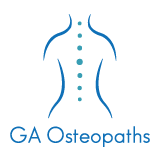Frozen Shoulder
If you’ve heard about frozen shoulder—also known as adhesive capsulitis—you know it’s no fun. A frozen shoulder has lost its normal range of motion and causes pain. The condition can last for around 18 months.About 2% of the population (US) is affected by frozen shoulder.
It often impacts adults aged 40 to 60, and is more common in women and people with certain medical conditions, such as diabetes.
Symptoms are felt when the shoulder joint capsule, composed of ligaments surrounding the shoulder joint, becomes inflamed and thickens, restricting movement. Early on, frozen shoulder symptoms (pain and limited motion) are similar to symptoms of other shoulder conditions—including labral tears and rotator cuff tears—making diagnosis a process of elimination.
Causes of frozen shoulder
Frozen shoulder happens when the tissue around your shoulder joint becomes inflamed.
The tissue then gets tighter and shrinks, which causes pain.
Frozen shoulder can happen because:
- you had an injury or surgery that keeps you from moving your arm normally
- you have diabetes – it’s still unclear why this is but it’s important to have your regular diabetes check-ups to catch any problems early
However, it’s often not clear why people get a frozen shoulder.
3 Phases of Frozen Shoulder
Frozen shoulder has three different phases. Each phase can last several weeks to months. The three phases are:
- Freezing, with pain increasing over time
- Frozen, when stiffness is the primary symptom and shoulder pain may decrease
- Thawing, when shoulder strength and motion completely or partially return to normal
Many people with frozen shoulder do not need surgery and can reduce shoulder pain and regain movement with nonsurgical treatments such as Osteopath.
How long canfrozen shoulder last
Frozen shoulder usually takes at least 18 months to 2 years to get better. However with the help of GA Osteopaths, most patients start to feel more range of movement of their shoulder within a couple of weeks and a decrease in pain levels between 4 – 6 weeks.
It is important to remember that the pain and stiffness will usually go away eventually.
